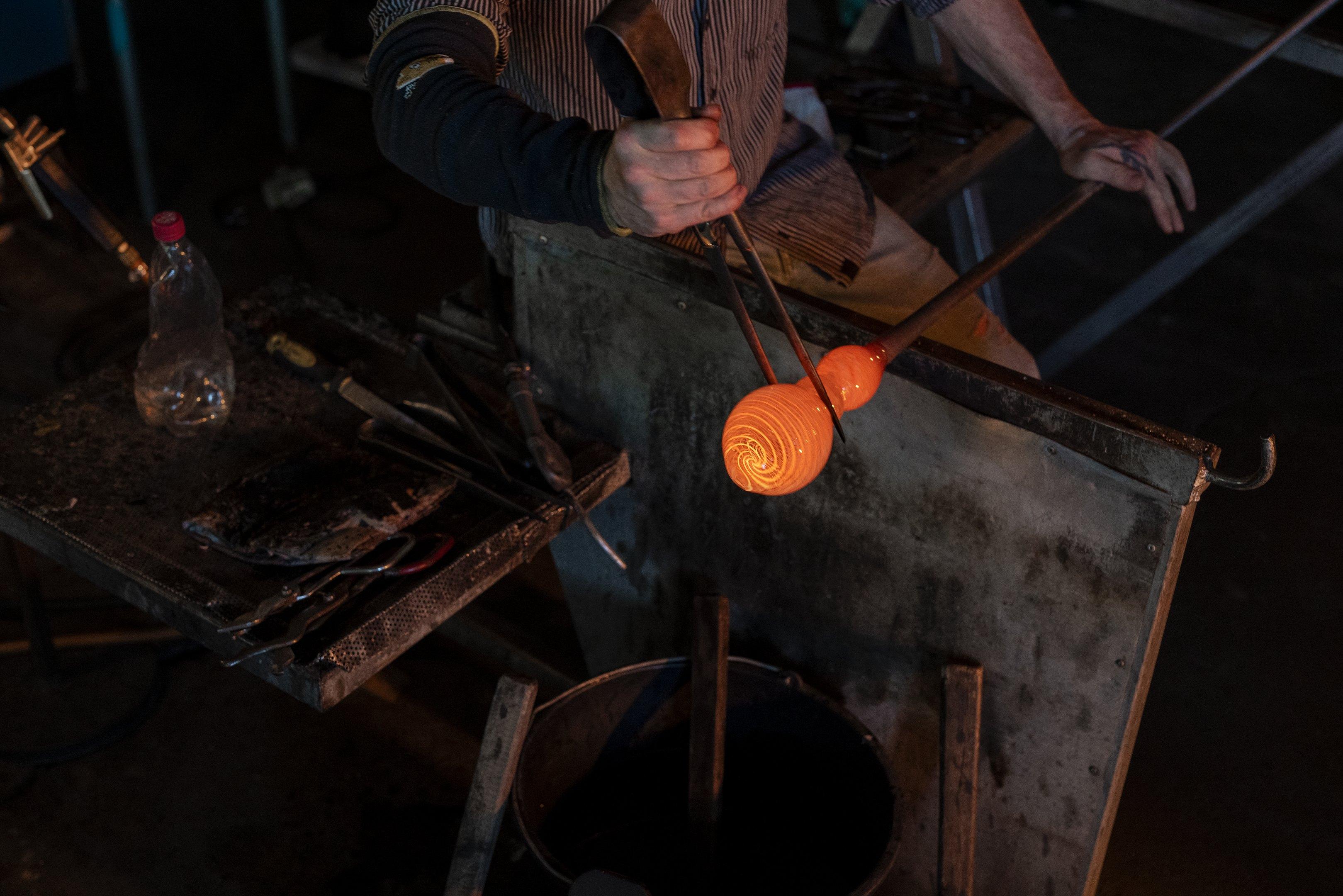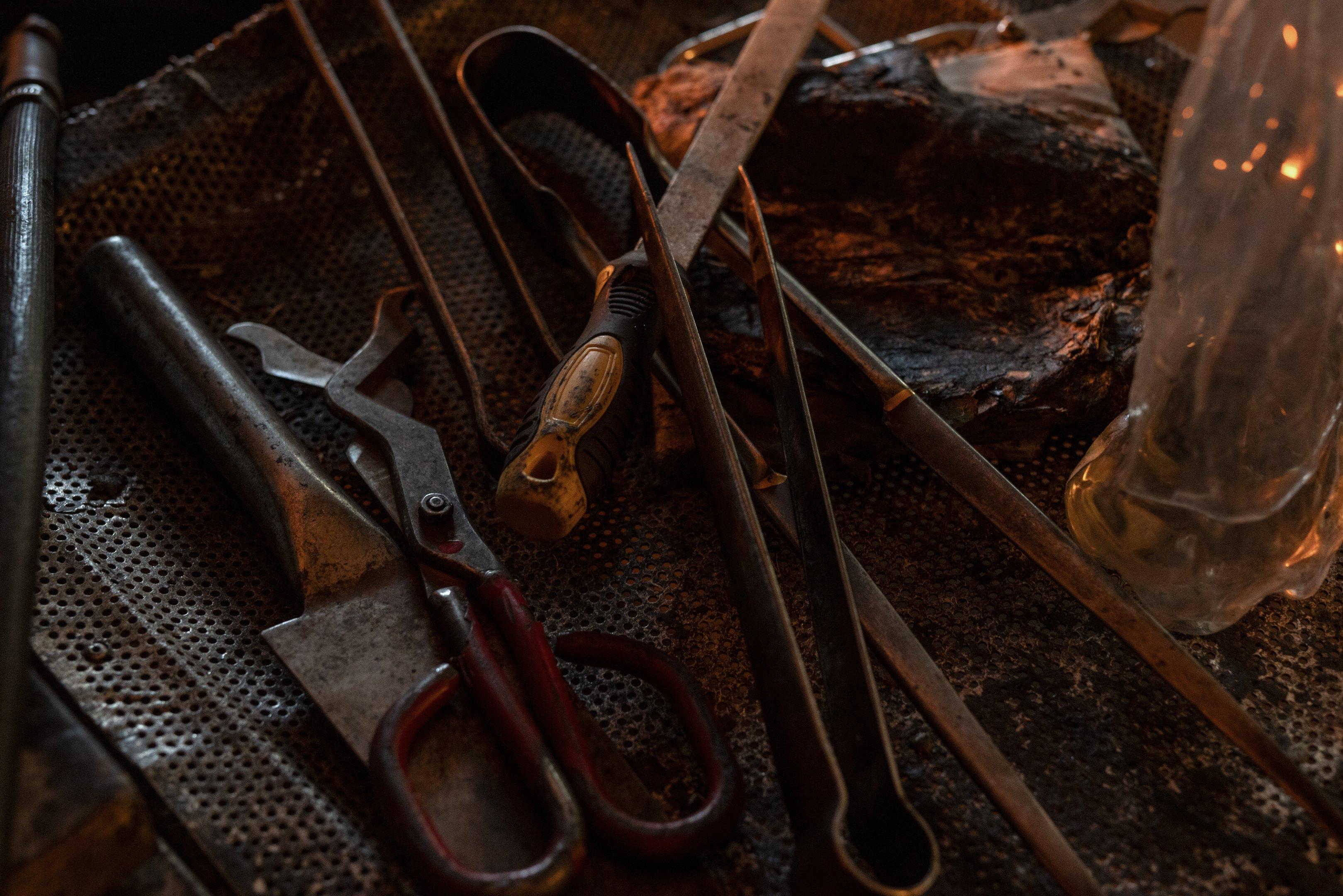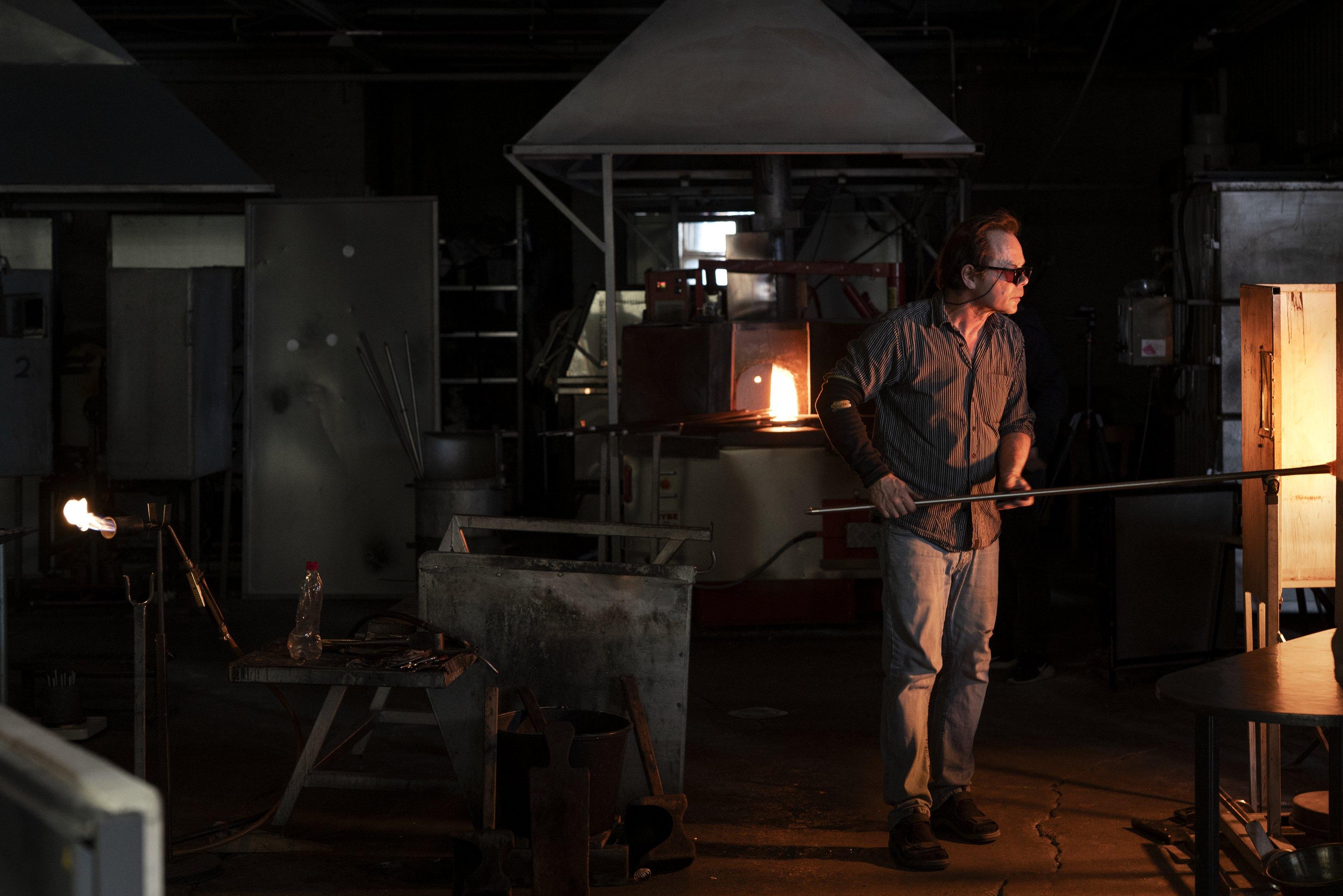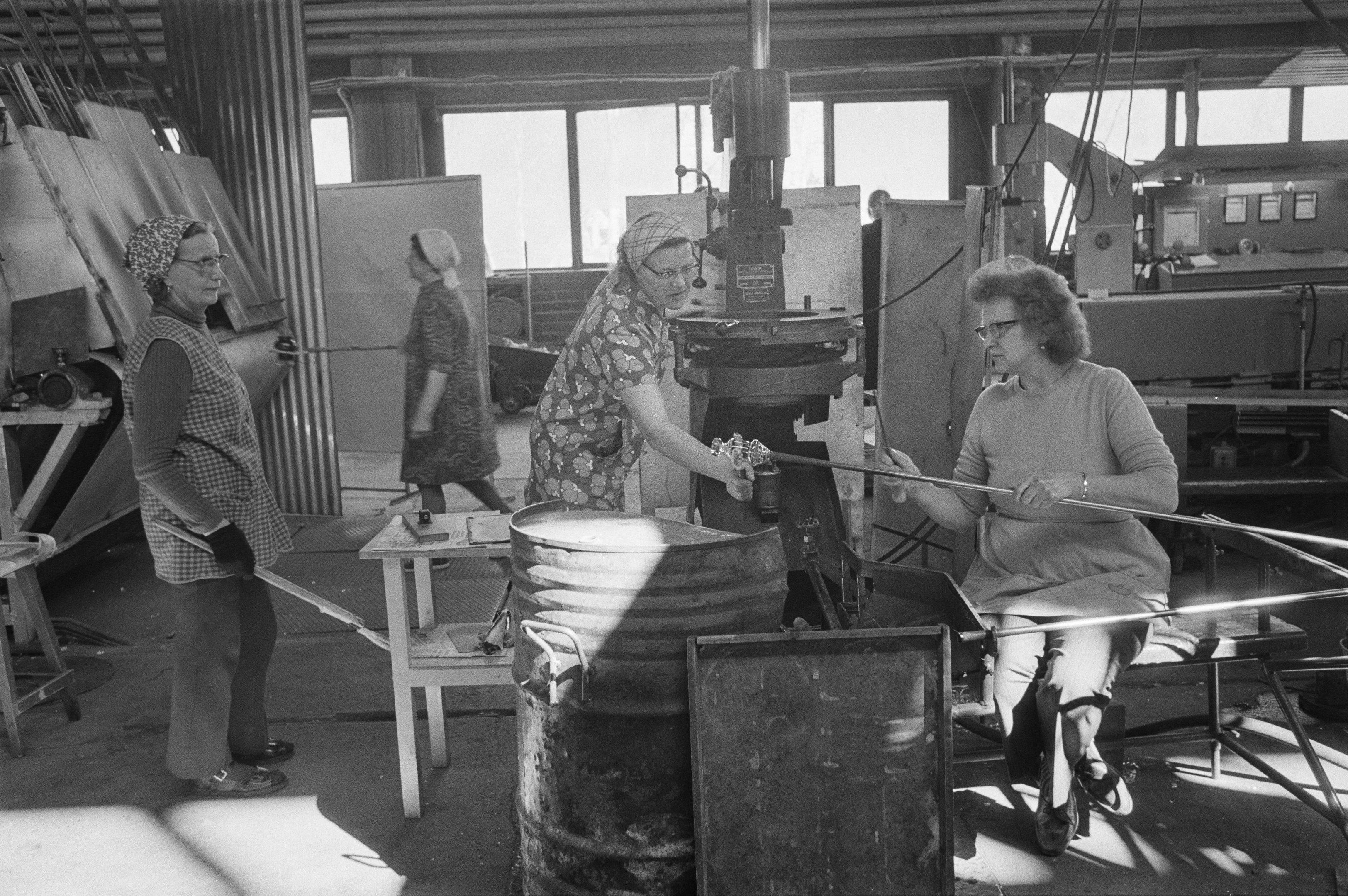Handcrafted glass know-how inscribed to UNESCO’s Representative List of Intangible Cultural Heritage

Knowledge, techniques, and skills related to handcrafted glass were added to UNESCO’s Representative List of the Intangible Cultural Heritage of Humanity on 6 December 2023. The acceptance of the multinational application pays homage to the glassmaking tradition, tradition bearers, and the entire Finnish glass sector. Maintaining this tradition requires transferring expertise across generations, enabling the work of makers, and appreciating their skills.
The application by Finland and five other countries to UNESCO’s Representative List of the Intangible Cultural Heritage of Humanity was accepted in Botswana on 6 December 2023. In addition to Finland, France, Germany, Spain, the Czech Republic, and Hungary lodged the multinational application. In Finland, 17 glass-industry and tradition-bearer communities were involved in the preparation of the application. The Finnish Glass Museum initiated the application in Finland and has been coordinating the project for ten years. In 2021, the Ministry of Education and Culture authorised the Finnish Heritage Agency to coordinate the application in cooperation with the Finnish Glass Museum and communities in the glass industry.
“We are proud of our new UNESCO inscription which will make visible the glass makers and the connections of intangible cultural heritage to Finnish design. There is a strong skill-base in the field of handcraft in Finland and now it receives well-earned recognition,” says Leena Marsio from the Finnish Heritage Agency.
Preserving the tradition requires transfer of expertise and appreciation of glassblowers
For decades, Finland has been internationally known for its glass design. Design must be accompanied by glass processing skills and seamless cooperation between designers and glassblowers. Working with glass is living intangible cultural heritage and a form of craftsmanship that requires special skills. UNESCO’s recognition further supports the international appreciation of tradition bearers and Finnish glass design.
“Glass items have a special meaning to the Finns. Their aesthetics are admired and their high quality and fame is something we feel proud of. The decision made by UNESCO is, in its part, enabling that the know-how is preserved and still developing,” says Hanna Mamia-Walther, the Director of the Finnish Glass Museum.
The tradition, originating in the late 17th century, is still alive yet endangered in Finland – a problem shared by the other countries involved in the application. Tradition bearers and communities maintaining and developing a living heritage play a central role in preserving the tradition. High-quality education and the transfer of expertise across generations are also required to keep the tradition alive. Additionally, consumers need to appreciate handcrafted glass.
The Finnish Glass Museum’s 10-year effort for the appreciation of glass sector rewarded by UNESCO’s decision
For ten years, the Finnish Glass Museum has been actively working in Finland and abroad to have glass-related expertise added to UNESCO’s Representative List of Intangible Cultural Heritage. As the museum of national responsibility, the Finnish Glass Museum plays a role as the museum sector’s developer and active partner in society.
The Finnish Glass Museum has brought the actors in the Finnish field of glass together: A comprehensive network in the industry was founded in November 2023 to develop the preservation work for the glass sector. Internationality has always been vital in the field of glass, and the application process has further strengthened the cooperation between international operators and museums.
The Finnish Glass Museum has been collecting information about the history and current state of glassblowing for 40 years. Additionally, the museum has revived traditional handcrafting skills in international projects and workshops. Next, the museum will preserve in its collections the glassmaking techniques and tools considered quintessentially Finnish and continue interviewing tradition bearers.


More information
Hanna Mamia-Walther, director of the Finnish Glass Museum, +358 40 330 4100, hanna.mamia-walther(at)riihimaki.fi
Uta Lauren, the project’s preparatory working group’s expert member from Finland, glass expert, +358 40 131 3054, uta.lauren(at)gmail.com
Leena Marsio, senior advisor, Finnish Heritage Agency, leena.marsio(at)museovirasto.fi, +358 295 336 017
Mirva Mattila, senior advisor for cultural affairs, Ministry of Education and Culture, mirva.mattila(at)gov.fi, +358 295 330 269
Press photos and videos for the media, press page: https://museovirasto.fi/fi/medialle/lasi (in Finnish)
Professionals in the field:
Iittala, master and apprentice, transferring expertise across generations: Heikki Punkari, h.punkari(at)gmail.com and Aada Vainio, aada.vainio(at)outlook.com, +358 45 639 6884 (Punkari has blown many famous pieces, including Sarpaneva’s Orkidea, and still teaches students at the Tavastia Vocational College.)
Tradition bearer, know-how, a lengthy career as a specialist of his field in Riihimäen Lasi Oy, Jaakko Liikanen, Riihimäki, jaska.liikanen(at)gmail.com
Glassblower Kaappo Lähdesmäki, Lasismi, Riihimäki, +358 41 705 0367, info(at)lasismi.fi, When arranged in advance, the media may document glassmaking.
Tradition education, glass artist, designer, and educator Kirsti Taiviola, Aalto University: +358 40 700 8543, kirsti.taiviola(at)aalto.fi, When arranged in advance, the media may document glassmaking at the Aalto University Glass Workshop, contact information: Glass Workshop master: +358 50 591 7877, slate.grove(at)aalto.fi
Design perspective, designer Heikki Orvola, heikki.orvola(at)gmail.com, Orvola has worked as a designer with several glassblowers, including Italian masters.
When arranged in advance, the media may document glassmaking at Iittala glass factory: Noora Hostikka, Head of Communications Projects, Fiskars Group, +358 50 5666 101


